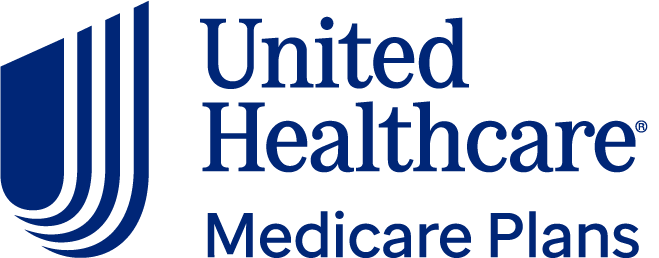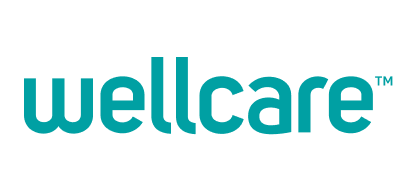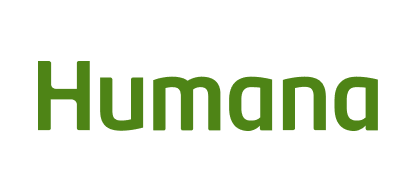The bottom line: AARP offers Medicare Part D plans through UnitedHealthcare, and you don’t have to be a member to enroll. These plans are widely available and simple to navigate. The company offers two options: a more affordable basic plan and a high-end plan. But AARP/UHC’s 2026 star ratings are below average, and it doesn’t offer the cheapest plans. Jump to: Full Review

AARP Medicare Part D pros and cons
Pros
- Plan availability: AARP’s plans are available in all 50 states, Washington, D.C. and five U.S. territories.
- Simpler plan options: With one lower-cost and one higher-end option, AARP’s Medicare Rx plan choices are easy to navigate.
Cons
- High premiums: AARP’s premiums are higher on average than national competitors’.
- Member satisfaction: AARP Medicare Rx plans get below-average ratings for helping members fill their prescriptions and overall satisfaction.
- $0 copay options: Only the most expensive AARP Medicare Rx plan has any $0-copay options.
Compare against other providers




» More options in our roundup of the best Medicare Part D plans
Compare against other providers


» More options in our roundup of the best Medicare Part D plans
Our full review
Why trust NerdWallet
45+ Medicare companies and brands analyzed by our team of experts.
30+ years of combined experience covering Medicare and personal finance.
Governed by NerdWallet's strict guidelines for editorial integrity.
NerdWallet’s Medicare content, including articles, reviews and recommendations, is produced by a team of writers and editors who specialize in Medicare. Their work has appeared in The Associated Press, Washington Post, Nasdaq, MSN, MarketWatch, Yahoo! Finance and other national and regional media outlets. They have been cited in publications including Healthline, and appeared on NerdWallet's "Smart Money" podcast.
AARP Medicare Rx star ratings
Average Part D star rating, weighted by enrollment: 2.27 stars
AARP Medicare Part D plans from UnitedHealthcare get an average star rating of 2.27 stars from the Centers for Medicare & Medicaid Services (CMS) in 2026, weighted by enrollment. This is slightly lower than the rating they received for 2025. For comparison, the weighted average star rating for all stand-alone Part D plans is 3 stars.
CMS rates Medicare Part D plans on 12 quality measures. (You can find definitions for each of these factors in the CMS Star Ratings Technical Notes.)
These ratings use a 5-point scale, where 5 is the best and 1 is the worst. The agency bases its ratings on drug plans’ quality of service and customer experiences, and ratings are updated annually.
» MORE: Medicare star ratings: How they can help you choose a plan
AARP Medicare Part D prescription drug plans
There are two AARP Medicare Rx Part D prescription drug plan options available from UnitedHealthcare in 2026:
AARP Medicare Rx Saver: According to AARP and UnitedHealthcare, this plan is a good fit if you receive Medicare Extra Help subsidies or “want a robust pharmacy network.”
AARP Medicare Rx Preferred: According to AARP and UnitedHealthcare, this plan is a good fit if you “want our most extensive drug coverage and access to a broad pharmacy network.”
Medicare beneficiaries with Original Medicare (Part A and/or Part B) can purchase a Medicare Part D plan for prescription drug coverage. Part D plans are sold by private insurance companies. The costs and coverage can vary significantly, so it’s important to compare options.
AARP Medicare Rx Part D prescription drug plans are insured by UnitedHealthcare. Over 3.5 million Medicare beneficiaries have AARP Medicare Rx Part D plans from UnitedHealthcare as of September 2025.
More Nerdy Perspective
AARP Medicare Part D cost
AARP Medicare Rx premiums and deductibles
The average AARP Medicare Rx plan costs $88.10 per month, but this cost can vary significantly depending on the plan you choose and where you live. While there are some AARP Medicare Part D plans with a $0 premium, these are only available in Hawaii, New Mexico, Wisconsin, American Samoa and Guam.
Here are the 2026 premiums and deductibles for AARP’s stand-alone Medicare Part D prescription drug plans:
Plan | Pricing |
|---|---|
AARP Medicare Rx Saver from UHC | Monthly premiums:
Annual deductible: $615. |
AARP Medicare Rx Preferred from UHC (50 U.S. states and Washington, D.C.) | Monthly premiums:
Annual deductible: $130. |
AARP Medicare Rx Preferred from UHC (American Samoa, Guam, Northern Mariana Islands, Puerto Rico and U.S. Virgin Islands) | Monthly premiums:
Annual deductible: $615. |
» If you're concerned about affording Medicare Part D, look into Medicare Extra Help.
Out-of-pocket costs
What you pay for deductibles and copays can vary depending on where your medication falls on the plan’s formulary. A formulary is the plan's list of covered drugs, organized by tiers. Having $0-deductible and $0-copay options can help you minimize your out-of-pocket costs.
AARP’s plans don’t offer many of these $0 options in 2026, and availability can vary by location:
AARP Medicare Rx Saver from UHC
$0-deductible options:
None.
$0-copay options:
None.
AARP Medicare Rx Preferred from UHC
$0-deductible options:
None.
$0-copay options:
In 50 U.S. states and Washington, D.C.: Tier 1 and Tier 2 drugs from a preferred mail-order pharmacy (90-day supply).
In American Samoa, Guam, Northern Mariana Islands, Puerto Rico and U.S. Virgin Islands: None.
Optum Home Delivery Pharmacy and Optum Rx are the AARP Medicare Rx preferred mail-order pharmacies. You can order your prescriptions from other pharmacies, but you might not receive preferred pricing.
Cost-sharing requirements for higher tiers can quickly get more expensive. As a result, it’s important to check where your medications and pharmacies fall on each plan’s formulary.
Copay vs. coinsurance requirements
You’ll want to check whether you’ll pay a copay or coinsurance for your medications. Copays are set dollar amounts, so it’s easy to see what you’ll pay. Coinsurance is a percentage of the price for your medications, so coinsurance requirements can be less predictable and more expensive.
For 2026, the tier at which AARP Medicare Rx plans start requiring coinsurance rather than copays varies depending on plan and, in some cases, location:
Both the AARP Medicare Rx Saver plan and Medicare Rx Preferred plan have copays for Tiers 1-2 and coinsurance for Tiers 3-5 in the 50 states and Washington, D.C. This is a change from 2025, when the Preferred plan had copays for Tiers 1-3.
In American Samoa, Guam, the Northern Mariana Islands, Puerto Rico and the U.S. Virgin Islands, the AARP Medicare Rx Preferred plan has a 25% coinsurance for Tiers 1-5.
You can enter your medications and pharmacy information on UnitedHealthcare’s website to see which drugs are covered and review your estimated costs with different plan options.
» MORE: How much does Medicare Part D cost?
AARP Medicare Part D service area
Stand-alone AARP Medicare Part D prescription drug plans are available from UnitedHealthcare in all 50 states, Washington, D.C., and five U.S. territories: American Samoa, Guam, the Northern Mariana Islands, Puerto Rico and the U.S. Virgin Islands.
All U.S. states and Washington, D.C., have both the AARP Medicare Rx Saver and AARP Medicare Rx Preferred plans. Only the AARP Medicare Rx Preferred plan is available in the U.S. territories.
About AARP
AARP is a nonprofit interest group and advocacy organization. It advocates for local, state and national policies on behalf of older Americans. AARP members can access benefits through the organization, including discounts on products and services.
About UnitedHealthcare
UnitedHealthcare is part of UnitedHealth Group, which is headquartered in Eden Prairie, Minnesota. It's the largest health insurance company in the U.S. The company offers individual- and employer-based health insurance plans, Medicare and Medicaid plans, dental and vision plans, and other types of supplemental insurance.
Read the NerdWallet reviews of these other UnitedHealthcare and AARP Medicare offerings:
AARP Medicare Supplement (Medigap) from UnitedHealthcare.
Read the NerdWallet reviews of these other AARP insurance products:
Compare Medicare Part D companies
Get more information below about some of the major Medicare Part D companies. These insurers offer plans in most states, but specifics may vary depending on your location.
Find the right Medicare Part D prescription drug plan
The interactive tool on Medicare.gov can help you find a Medicare Part D plan that covers your prescriptions. It also helps you compare costs among Medicare Part D and Medicare Advantage plans available to you.
Here are some things to keep in mind when comparing plans:
Check the formulary: Make sure the medicines you currently take are covered. Talk to your health care providers about what medications to look for. You might also also want to check for possible alternatives and/or drugs you think you might need in the future.
Look for plan changes: Formularies (lists of covered drugs) change frequently. Your insurer should send you a Notice of Plan Change when the formulary changes. Read that document carefully.
Check the pharmacy network: Most Medicare Part D plans have networks of lower-cost pharmacies. Check to see if the plan's pharmacies are convenient for you. Also, compare prices for using mail order.
You can switch plans during Medicare's open enrollment period, Oct. 15 to Dec. 7. Changes go into effect on the following Jan. 1.
If you have additional questions about Medicare, visit Medicare.gov or call 800-MEDICARE (800-633-4227, TTY 877-486-2048).
Best for Member satisfaction

- Medicare Rx Preferred plan offers extensive coverage.
- Simplified plan choices.
- Average plan premiums are high compared to competitors.
- Below-average ratings for member satisfaction.
- Only the higher-end Preferred plan has $0-copay options.
Article sources
NerdWallet writers are subject matter authorities who use primary, trustworthy sources to inform their work, including peer-reviewed studies, government websites, academic research and interviews with industry experts. All content is fact-checked for accuracy, timeliness and relevance. You can learn more about NerdWallet's high standards for journalism by reading our editorial guidelines.
- 1.Centers for Medicare & Medicaid Services. 2026 Star Ratings Data Tables. Accessed Oct 13, 2025.
- 2.Centers for Medicare & Medicaid Services. Medicare 2026 Part C & D Star Ratings Technical Notes. Accessed Oct 13, 2025.
- 3.UnitedHealthcare. Compare Medicare Part D Prescription Drug Plans. Accessed Oct 13, 2025.
- 4.AARP. Medicare Part D Prescription Drug Plans. Accessed Oct 13, 2025.
- 5.Centers for Medicare & Medicaid Services. Monthly Report by Contract. Accessed Oct 13, 2025.
- 6.Centers for Medicare & Medicaid Services. CY2026 Landscape (202509). Accessed Oct 13, 2025.
Medicare Part D plan review methodology
NerdWallet’s Medicare Part D reviews are based on ratings data from the Centers for Medicare & Medicaid Services (CMS), pricing, cost-sharing requirements, formulary design, consumer experience and more.
NerdWallet's editorial team reviewed five Medicare Part D insurance companies based on highest enrollment and greatest online search volume. Together, these five companies cover about 89% of Medicare beneficiaries with stand-alone Medicare Part D plans, according to CMS data. We review at least four major Medicare Part D companies in every state in the United States.
These reviews are a guide, but we encourage you to shop around and compare several plans to find the best coverage and rate for you. NerdWallet does not receive compensation for any reviews. Read our editorial guidelines for additional information.
Compare Medicare Part D Plans
Insurance company | CMS star rating | Out-of-pocket costs | Member experience | Learn more | |
|---|---|---|---|---|---|
BEST FOR LOW AVERAGE PREMIUMS | |||||
 (855) 432-0512 / TTY 711 M-F 9AM-9PM, Sat 10AM-6PM ETSpeak to a licensed insurance agent on askchapter.orgon NerdWallet | 3.50 | 3.50/5 | Varies | 3.5 (Above average) | (855) 432-0512 / TTY 711 M-F 9AM-9PM, Sat 10AM-6PM ETSpeak to a licensed insurance agent on askchapter.orgon NerdWallet |
BEST FOR $0 PREMIUMS | |||||
 (855) 432-0512 / TTY 711 M-F 9AM-9PM, Sat 10AM-6PM ETSpeak to a licensed insurance agent on askchapter.orgon NerdWallet | 3.00 | 3.00/5 | Lower than average | 3 (Average) | (855) 432-0512 / TTY 711 M-F 9AM-9PM, Sat 10AM-6PM ETSpeak to a licensed insurance agent on askchapter.orgon NerdWallet |
 (855) 432-0512 / TTY 711 M-F 9AM-9PM, Sat 10AM-6PM ETSpeak to a licensed insurance agent on http://askchapter.orgon NerdWallet | 3.00 | 3.00/5 | Higher than average | 1.5 (Below average) | (855) 432-0512 / TTY 711 M-F 9AM-9PM, Sat 10AM-6PM ETSpeak to a licensed insurance agent on http://askchapter.orgon NerdWallet |
 (855) 432-0512 / TTY 711 M-F 9AM-9PM, Sat 10AM-6PM ETSpeak to a licensed insurance agent on askchapter.orgon NerdWallet | 2.50 | 2.50/5 | Average | 2.68 (Average) | (855) 432-0512 / TTY 711 M-F 9AM-9PM, Sat 10AM-6PM ETSpeak to a licensed insurance agent on askchapter.orgon NerdWallet |

